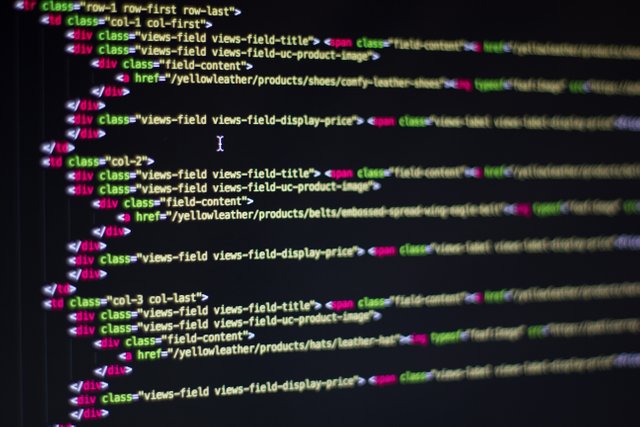Top 10 Dangerous Things In the World People need to be Aware Of
Climate Change: Climate change is a significant global threat that can lead to extreme weather events, sea level rise, and loss of biodiversity.
Terrorism: Terrorism is a tactic used by extremist groups to cause fear and intimidate populations.
Nuclear Weapons: The existence of nuclear weapons poses a constant threat of catastrophic destruction if used in a war or by terrorists.
Pandemics: Pandemics such as the COVID-19 pandemics can cause widespread illness and death, as well as economic and societal disruption.
Cyberattacks: Cyberattacks can cause damage to infrastructure and steal sensitive information, can be launched by nation-states, criminals, and hackers.
Air Pollution: Air pollution is a major environmental health concern, linked to respiratory diseases, heart disease, and cancer.
Opioid Crisis: Opioid crisis is a public health emergency, caused by overuse of prescription opioids and illegal opioids like heroin and fentanyl.
Human Trafficking: Human trafficking is a form of modern-day slavery, with millions of people being bought and sold for labor or sex.
Gun Violence: Gun violence is a major public health concern, causing tens of thousands of deaths and injuries each year.
Road Accidents: Road accidents are a leading cause of death and injury worldwide, caused by a variety of factors such as reckless driving, distracted driving and lack of safety regulations.
It's important to note that the level of danger can vary based on the specific context and region, and these are just a few examples of the many dangerous things in the world. It's also important to address that many of these issues are interconnected and addressing one can have a positive impact on others.
Cyberattacks are so popular now in this world, we need to be really be aware of this. Because now everyone has mobile phone and other electronic things where we have to be aware of.

Cyberattacks are a growing concern for individuals, businesses, and governments worldwide. They are malicious acts that use computer systems, networks, or the internet to cause harm or steal sensitive information. Cyberattacks can take many forms, including hacking, malware, phishing, and ransomware, and can have severe consequences, including financial losses, reputational damage, and loss of personal information.
One of the most common types of cyberattacks is phishing. Phishing attacks use social engineering tactics to trick victims into providing sensitive information, such as login credentials or financial information. These attacks often come in the form of emails or text messages that appear to be from a legitimate source, such as a bank or a government agency. Once the attacker has the information they need, they can use it to steal money or access sensitive systems.
Another common type of cyberattack is ransomware. Ransomware is a type of malware that encrypts a victim's files and demands a ransom payment in exchange for the decryption key. This type of attack can cause significant disruption to businesses and individuals, as they may be unable to access important files or systems until the ransom is paid.
Distributed Denial of Service (DDoS) attacks flood a website or network with traffic, making it unavailable to users. These attacks can be launched by individuals or groups and can cause significant disruption to online services.
Advanced Persistent Threat (APT) is a type of cyberattack that is often used by nation-states or other sophisticated attackers. The goal of an APT is to gain long-term access to a target's network and steal sensitive data. These attacks can be difficult to detect and can have severe consequences, as the attacker may have access to the network for an extended period.
Malware is a type of software that is designed to cause harm to a computer system. It can be delivered through various means, including email attachments and infected websites. Once installed on a device, malware can steal information, lock the device, or disrupt its normal functioning.
Insider threats are cyberattacks that come from within an organization, such as a current or former employee. These attacks can be particularly dangerous as they may have legitimate access to sensitive information.
IoT devices, such as smart home devices, can be vulnerable to cyberattacks if they are not properly secured. Attackers can use these devices to gain access to a target's network or steal personal information.
Cloud attacks are a type of cyber attack that targets cloud-based services and infrastructure, which can cause damage to data, disrupt services and steal sensitive information.
Cryptojacking is a type of cyber attack that uses malware to secretly mine cryptocurrency on a victim's device. This can slow down the device and cause financial loss.
Supply chain attacks are a type of cyber attack that targets a third-party vendor or supplier to gain access to a target organization. This type of attack can be difficult to detect and can have severe consequences.
These are just a few examples of the many types of cyberattacks that exist. It's important to note that the threat of cyberattacks is constantly evolving, as attackers develop new techniques and technologies to evade detection. To protect against cyberattacks, individuals and organizations should implement strong security measures, such as firewalls, antivirus software, and regular software updates, and be vigilant about suspicious emails and text messages.
Yes, it is important to be aware of cyberattacks as they can have serious consequences. Cyberattacks can cause financial losses, reputational damage, and loss of personal information. They can also disrupt essential services and cause widespread damage to computer systems and networks.